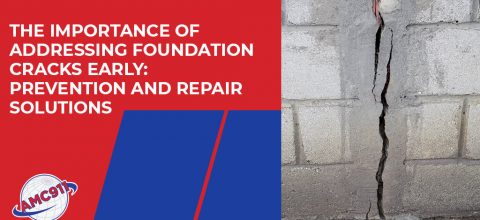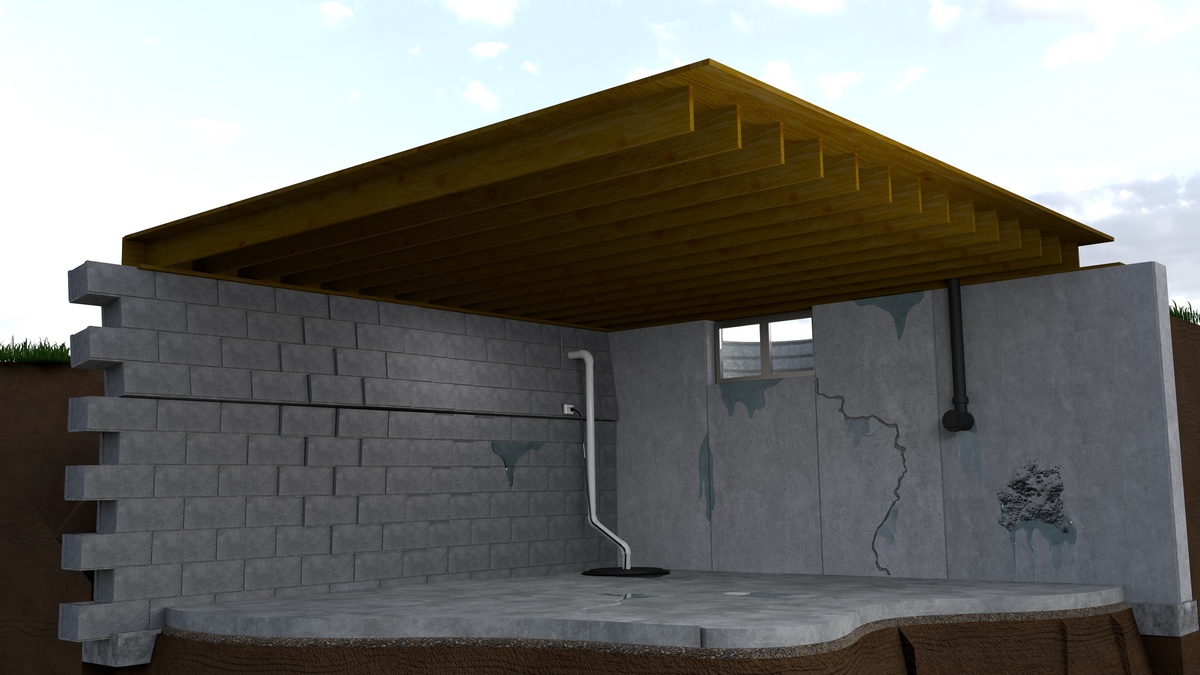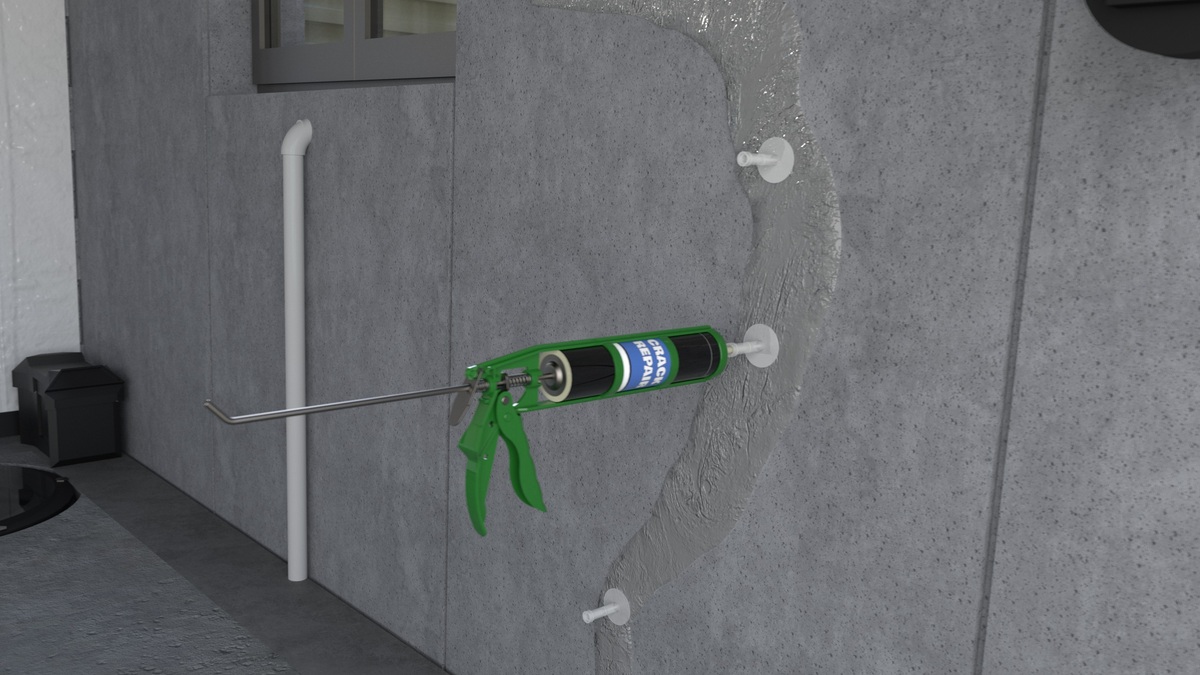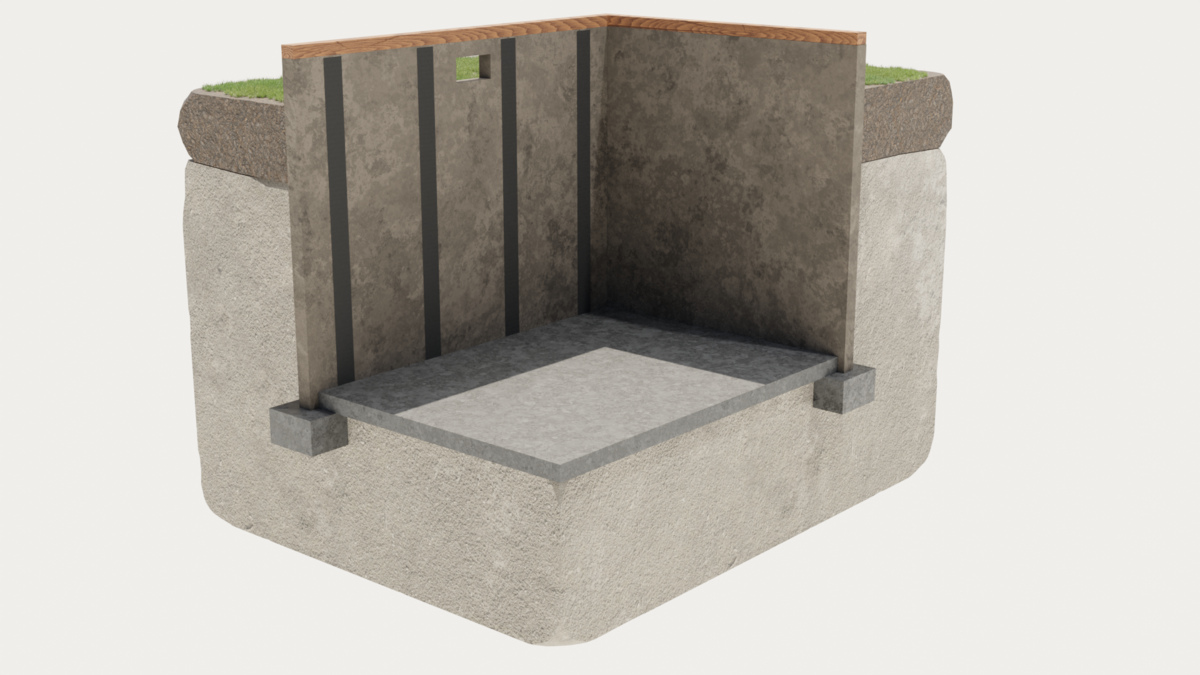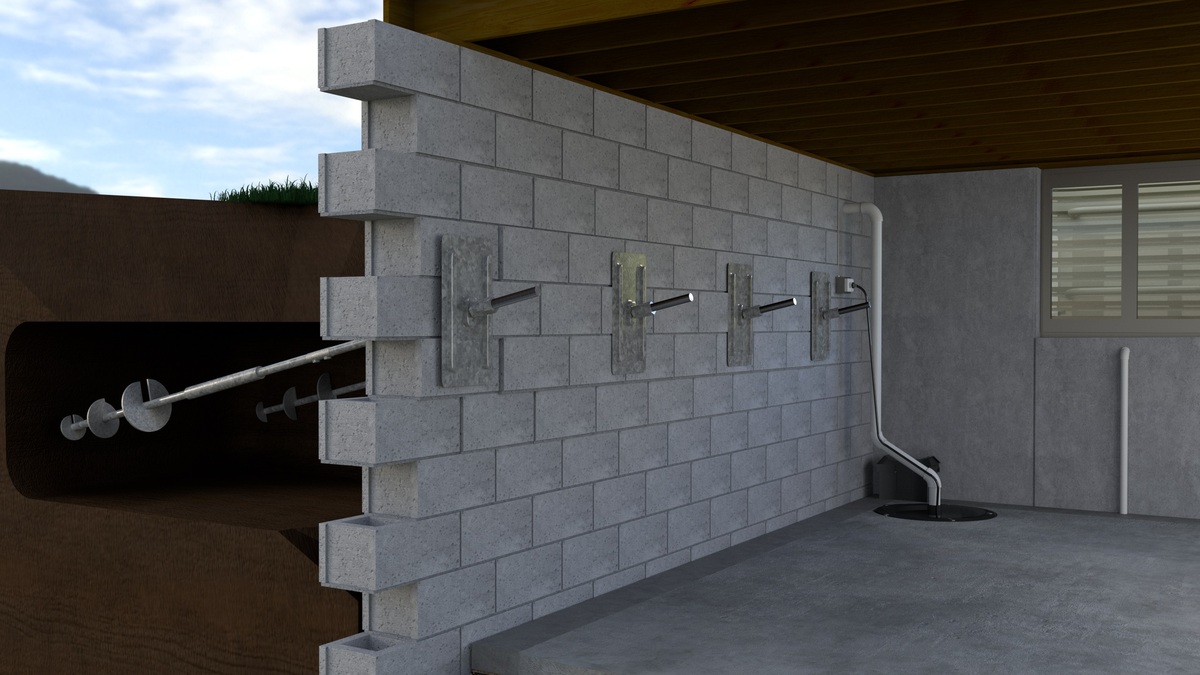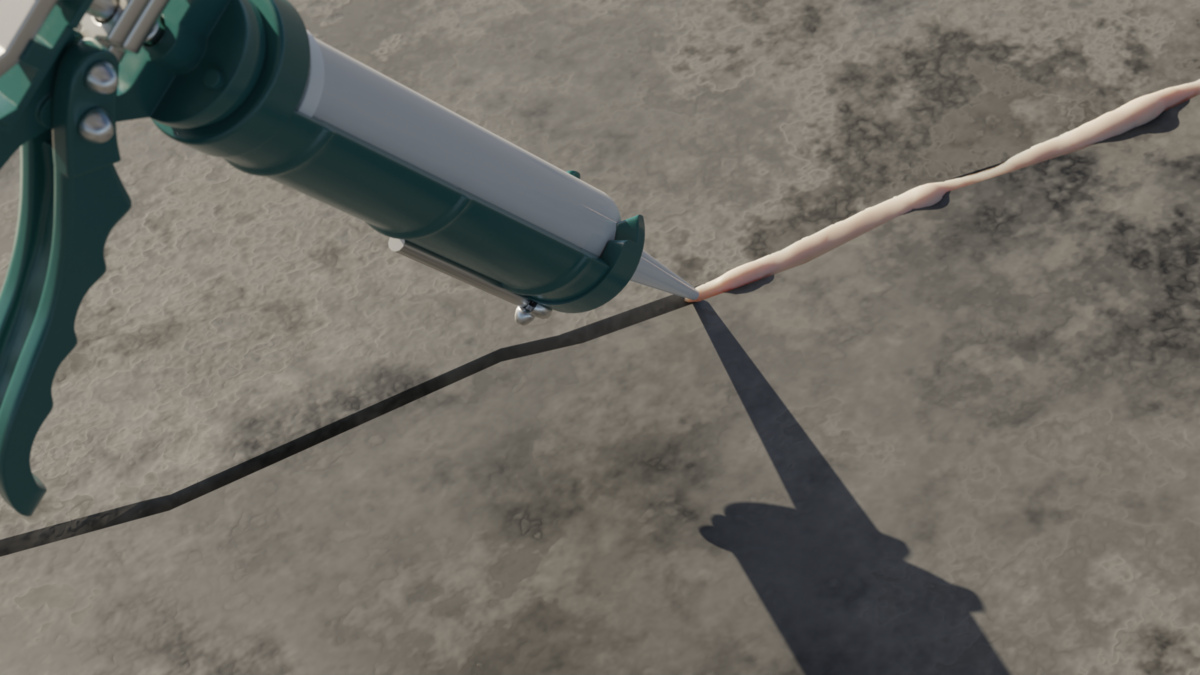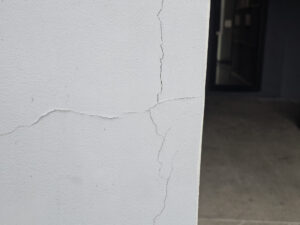Foundation cracks are a common indicator of trouble, but not all cracks are alike. Some are small and harmless, while others signal serious structural issues that require immediate attention. Ignoring foundation cracks can lead to bigger problems, including costly repairs and potential safety hazards. That’s why AMC911 provides expert foundation crack repair solutions to protect your home’s stability and long-term value.
In this article, we’ll explore what causes foundation cracks, why fixing them quickly matters, and the best foundation crack repair methods and prevention strategies to protect your home.
What Causes Foundation Cracks?
Foundation cracks can happen for many reasons, often tied to the soil around your home. Knowing what causes these foundation cracks can help you spot potential issues and take action before they get worse. Here are some common reasons why foundations crack:
Foundation Settling
When a vertical load is applied to soil, the soil deforms vertically. The extent of this deformation depends on the type of soil and the strength of the load, a process known as soil settlement, according to Science Direct. Over time, your home’s foundation naturally settles due to this movement, often resulting in small “hairline cracks.” These tiny cracks are typically harmless. However, if you notice larger or widening cracks, it could signal uneven settling. Uneven settlement stresses your home’s structure and often requires professional attention to prevent further damage.
Moisture Problems
Soil moisture can play a big role in damaging your foundation.
- Too much water: Heavy rain, poor drainage, or even a plumbing leak can expand the soil around your foundation. This added pressure can push against your foundation walls, causing cracks.
- Not enough water: On the flip side, when the soil gets too dry—like during a drought—it can shrink and pull back from your foundation. This leaves the foundation unsupported, which can lead to cracks.
Shifting Soil
Expansive soils, particularly common in areas with distinct wet and dry seasons, pose significant risks to foundations, as noted by Missouri S&T. These soils go through an annual cycle of swelling when wet and shrinking when dry. If your home stands on clay or other expansive soils, you’ll likely experience foundation cracks. The cyclic expansion and contraction of the soil cause constant movement, shifting your foundation and leading to cracks in walls or floors.
Poor Drainage
Water pooling near your home is a recipe for foundation trouble. When water doesn’t drain properly, it builds pressure against your foundation walls, weakening them over time. Common drainage issues include:
- Sloping ground that directs water toward your home.
- Clogged or missing gutters and downspouts.
- Improperly installed drainage systems.
This excess water can lead to cracks in your home and even more serious structural damage when left unchecked.
Why Early Foundation Crack Repair Is Crucial
Taking care of foundation cracks as soon as they appear is critical for avoiding bigger structural problems later. Ignoring these foundation issues can lead to serious damage that affects your home’s safety and value. Here’s why early repair matters:
1) Prevent Water Intrusion
Cracks in your foundation provide an entry point for water to seep into your home. This can lead to:
- Moisture problems that weaken the structure.
- Mold growth can pose health risks for your family.
- Flooding during heavy rains or snowmelt.
Sealing cracks and waterproofing your foundation early helps keep water out and prevents costly moisture-related damage to your home.
2) Avoid Structural Damage
Foundation cracks don’t stay the same size. Over time, they can widen and lead to:
- Bowing walls from increased pressure.
- Uneven floors caused by shifting or settling.
- Compromised foundation stability affects the entire structure.
Addressing cracks early stops these problems before they escalate, ensuring your home remains safe and stable.
3) Save On Repair Costs
The longer foundation cracks go unrepaired, the more damage they cause. As the issues worsen, repair solutions become more extensive and expensive. Early intervention:
- Minimizes repair costs.
- Reduces the likelihood of needing invasive methods like wall reinforcements or complete foundation replacements.
Real-World Example Of A Home With Foundation Cracks
Anita’s experience perfectly illustrates the importance of addressing foundation cracks as soon as they are noticed. When buying a home built in 2008, Anita came across settling cracks during the inspection. While these cracks were initially dismissed as cosmetic, her decision to take action and have AMC911 perform a professional inspection proved crucial.
By calling AMC911 for an expert evaluation, Anita discovered the cracks were more than surface-level issues—they revealed severe foundation damage that could have led to significant repair costs in the future. She avoided investing in a home with underlying structural problems thanks to the early inspection.
This example underscores how early inspections and repairs can prevent costly consequences. Foundation cracks may seem minor but can quickly worsen without professional attention. Anita’s decision to prioritize a thorough inspection saved her from potential water intrusion, structural instability, and skyrocketing repair expenses.
The Best Solutions For Repairing Foundation Cracks
Foundation cracks can be effectively repaired using various methods, each tailored to the size and severity of the damage. Here are the most reliable foundation crack repair solutions and how they work:
Epoxy Injection
Epoxy injection is an excellent solution for filling and sealing cracks in foundation walls or floors. This method involves injecting a strong epoxy resin into the crack, which:
- Bonds the concrete back together, restoring its strength.
- Seals the crack to prevent water from seeping in, reducing the risk of moisture-related problems like mold or rot.
- Provides long-lasting structural repair for narrow to moderately wide cracks.
Epoxy injection is ideal for non-moving cracks and is often used in residential and commercial foundations.
Carbon Fiber Straps
Carbon fiber straps are a cost-effective way to reinforce minor cracks and stabilize bowing foundation walls. These lightweight but extremely strong materials are applied directly to the wall surface and secured with epoxy. Key benefits include:
- Preventing further movement or bowing of the wall.
- Eliminating the need for extensive excavation.
- Offering a quick and durable repair option for small cracks or structural concerns.
This repair method is especially useful for homes with minimal visible damage but potential for future instability.
Wall Anchors
Wall anchors are designed for more severe cases where foundation walls have started to bow or lean due to hydrostatic pressure. These anchors are installed by:
- Attaching steel plates to the interior wall.
- Connecting them to anchors placed in the stable soil outside the foundation using high-tensile rods.
- Gradually tighten the anchors over time to straighten and stabilize the wall.
Wall anchors provide long-term support and are a reliable solution for preventing further structural movement.
Crack Sealing
Crack sealing is a simple yet effective solution for small hairline cracks. Sealants like polyurethane or silicone are applied to fill the cracks, providing:
- A barrier against water infiltration, which can lead to moisture damage.
- Protection from the expansion of the cracks due to freezing and thawing cycles.
While this method doesn’t address underlying structural issues, it’s a practical way to prevent minor cracks from worsening.
How To Prevent Future Foundation Cracks
Foundation crack prevention is as important as repairing existing ones. Taking proactive steps can safeguard your foundation from damage and costly repairs.
- Control Moisture Around Your Foundation: Proper drainage is essential to prevent cracks caused by soil expansion and contraction. Install gutters and downspout systems to direct rainwater away, and use French drains to prevent water pooling near your foundation. Ensure your yard is graded to allow water to flow away naturally, and avoid overwatering landscaping near the foundation to reduce soil saturation.
- Stabilize Expansive Soils: Expansive soils like clay shrink and swell with moisture changes, increasing the risk of cracks. Use soil stabilization techniques like chemical injections to reduce soil movement. Foundation piers can provide added stability, and maintaining consistent moisture levels around your home prevents extreme soil shifts.
- Waterproof Your Foundation: Waterproofing adds a protective barrier against moisture. Apply waterproof membranes to exterior foundation walls and seal existing cracks to block water entry. Vapor barriers in crawl spaces help control humidity, and regular checks for plumbing leaks prevent water buildup near the foundation.
- Conduct Regular Inspections: Routine inspections are key to catching problems early. Look for cracks in walls, floors, ceilings, bowing walls, uneven floors, or gaps around your doors and windows. Professional foundation inspections can identify and address issues before they worsen.
Stop Foundation Cracks Before They Grow
Foundation cracks may seem minor, but they can quickly become a major problem if left unaddressed. By repairing cracks early and taking steps to prevent future cracks, homeowners can protect their foundations from further damage and ensure the long-term stability of their homes. Professional foundation repair solutions offer the best protection for homes affected by foundation cracks, whether it’s epoxy injection, carbon fiber reinforcement, or waterproofing.
Don’t wait until the damage worsens—contact AMC911 today on how to fix foundation cracks and customized foundation repair solutions. Your home’s safety and stability are worth it!


